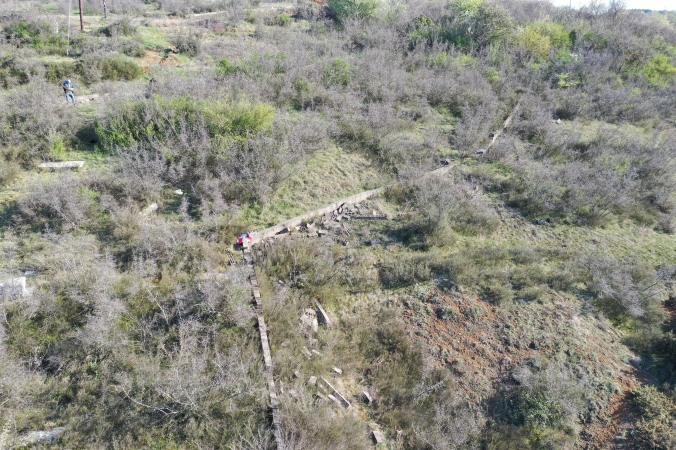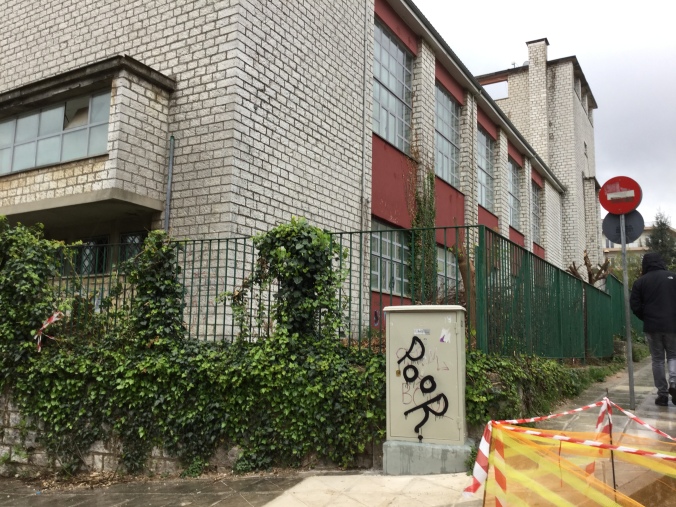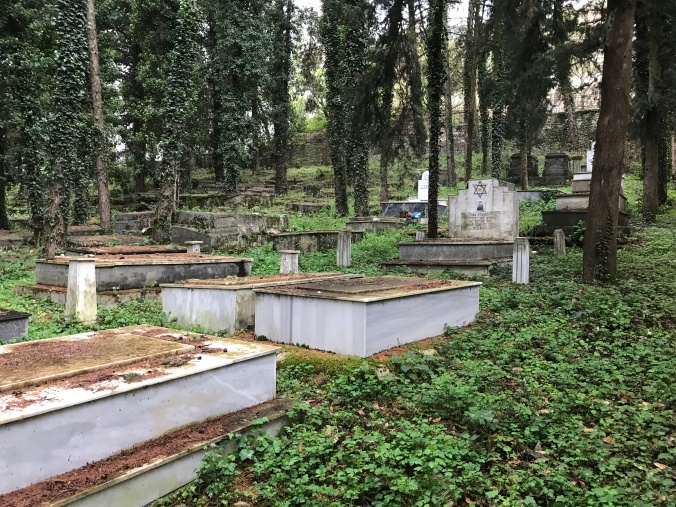The ESJF European Jewish Cemeteries Initiative is a German-based non-profit organization with the core objective of protecting and preserving Jewish cemetery sites across the European continent. With the financial support of the European Commission, the ESJF started in December 2018 a full mapping process of 1,500 Jewish burial sites across five European countries. Diána Vonnák, Head Officer of Communication and Media (and a trained social anthropologist) at ESJF European Jewish Cemeteries, answered some questions for Against Antisemitism blog about this unique project.
Until its completion in June 2020, the project will carry out extensive research and survey work in five European countries: Greece, Lithuania, Moldova, Slovakia, and Ukraine. Why did you choose those five countries?
We wanted to have a range of countries that are all important for the history of Judaism in Europe, and that encompass the diversity of European Jewish heritage. It has been a great experience to work in Sephardic and Ashkenazi cemeteries and research the differences. Another important angle is the institutional and legal diversity of these countries: the challenges have been really different: Lithuania had a comprehensive list of cemeteries, but these weren’t surveyed with the accuracy of our drone surveys, while for instance Ukraine and Moldova had no comprehensive data. In these cases it is crucial to verify the existence of cemeteries, visit any site where there’s a chance to find one: we visited 132 places in Moldova and were able to survey 70 cemeteries, but there were places nobody documented before. This work is less spectacular but it is incredibly important if we want to have a proper overview of European Jewish cemeteries. In some places, like in Slovakia, the Jewish community owns these sites, but elsewhere, as in Greece, ownership varies from site to site. By the end of this survey we will have a solid grasp of the main challenges and a greater understanding of the situations in our project countries.
In order to map burial sites, your team is using unmanned aerial vehicles commonly known as drones. How do drones facilitate your work?
Drone technology allows us to take high resolution aerial images which has individual GPS coordinates of every image (geotag). Later we are processing those images to create a point cloud from which we can make a preliminary terrain analysis such as topography of the site. This gives us very precise information about each and every site, which serves a dual purpose: it documents the condition of every cemetery, and it is the basis of any future protective measure like fencing. We are using point cloud to create a 3D model of sites that makes it easy, cost effective and fast to plan fencing. In short, UAV made our work more faster and accurate.
Your team travelled in Greece between 26 March and 14 April 2019, visiting 48 places and mapping 45 sites altogether. What have been the challenges and particularities of mapping Jewish cemeteries in Greece?
The geography of Greece was a challenge for our survey team: places can be remote, you have to fly, take a ferry to reach smaller islands. This is something we did not experience in other places. Greece is really divided: most sites are either demolished, or when they survive, they tend to be fenced and cared for. We classify cemeteries according to the urgency of the need for fencing and we found only three sites that would require urgent action: Argostoli and the old and new cemetery in Didymotheicho.


The city of Ioannina once was the center of Romaniote Jewish life. It is not well known that the Zosimaia Lyceum and a school yard are standing today on the site of the old Jewish Cemetery. How did you survey a burial site that doesn’t exist anymore?
We use old maps and historic information to establish the boundary of cemeteries. In case they are built over, as in Ioannina, Heraklion or Corfu, we still gather photographic evidence, but there is not much we can do. In Greece, this has been a sadly common situation: 43% of the sites we surveyed were demolished and overbuilt. In Thessaloniki, for instance, a university campus was built on a really old cemetery that dates back to the late 15th century. We encountered similar cases elsewhere too, e.g. in Ukraine. In these cases, memorialisation is especially important, as this remains our only chance to save these sites from oblivion. Education, awareness raising is crucial in these contexts and it takes the place of using cemeteries themselves as testimonies of a shared history, which is what ESJF would do otherwise.


Your team also surveyed other Jewish cemeteries in the region of Epirus which are less known than the cemetery in Ioannina: Paramythia, Arta and Preveza. Which are the challenges that you faced?
Arta, Paramythia and Preveza are all demolished sites, so our work was chiefly about documentation. Arta has a sign at the former Jewish neighbourhood, and a memorial. Preveza has residential and commercial buildings over it, Paramythia is now covered by a highway and a bus stop. In these cases it is often difficult to establish the boundary accurately, that can be a huge challenge. If we step away from the challenges of survey itself, the biggest difficulty lies in keeping the memory of something invisible alive. A comprehensive database like ours helps to grasp the sheer scale of destruction, and hopefully to work against it, to address this loss.

According to a recent study commissioned by the Heinrich Böll Stiftung Greece, the incidents of antisemitic rhetoric and the recorded attacks against Jewish cemeteries, monuments and synagogues in Greece are disproportionately high although the numbers of Greeks of Jewish religion are, according to the Greek Census, very low (5000, i.e. 0.05% of the Greek population). How do you think that the European Jewish Cemeteries Initiative can contribute to a better protection of Greek Jewish cemeteries?
ESJF believes in the importance of the engagement of communities, local authorities and the broader public in general. We always try to work with mayors, reach out to schools. We do not carry out advocacy work per se, but we believe in the power of restoring knowledge and awareness about heritage sites. Jewish heritage is part of our shared, European heritage and often, especially in the absence of a local Jewish community, gentile communities are important guardians of these sites. Our surveyors experience quite some interest from locals: people ask questions, want to know more. Building an open-access database, carrying out educational projects and engaging local leaders are the first steps to work against atrocities.
Some weeks ago, Moses Elisaf, the head of the tiny Jewish community in Ioannina and a distinguished professor of pathology, was elected the country’s first-ever Jewish mayor. What do you think about Elisaf’s victory?
Of course we welcome a political climate where the Jewishness of a candidate is not an obstacle for their success. However, the sheer emphasis that his Jewish origins receive points to the fact that Greek Jewish life hasn’t been “normalized” post-Holocaust in a way that one may hope. There is still an “us” vs. “them” logic in marking Elisaf as a Jewish mayor. We had an amazing experience with many mayors in various countries, and have seen the dramatic difference their policies can make in the fate of Jewish heritage sites. We welcome any mayor, Jewish or not, who is happy to undertake the responsibility of tending to the local Jewish heritage, engaging their entire community. ESJF’s work, through education and awareness, aims at showing that Jewish heritage is not something separate that concerns only those who identify as Jewish. Instead, it’s a common heritage. Greek Jewish history is also relevant and important for non-Jewish Greeks (and beyond that for Europe in general). We hope that ESJF’s work can be a help in normalizing and integrating Jewish presence, Jewish identity and Jewish heritage in Europe.

The ESJF provides free access to its database of Greek cemetery sites: https://www.esjf-surveys.org/surveys-in-greece/
